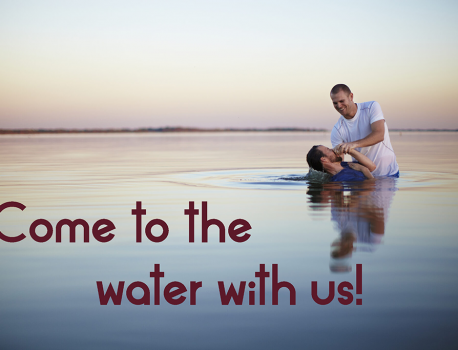Teaching from Sunday morning
Friday Night baptisms and prophetic words
Sunday 9 AM Baptisms (I apologize to Coe and Mya, somehow we missed you on the recording)
Sunday 10:30 AM Baptisms and prophetic words
Communion in the Old Testament: A Teaching
When we come to the Lord’s Table, we often think of Jesus’ words in the Upper Room…“Do this in remembrance of Me.” But the roots of communion stretch deep into the Old Testament. Long before Jesus lifted the cup and broke the bread, God was already preparing His people to understand the meaning of this sacred meal.
The Passover: Deliverance Through a Substitute
The first and most foundational picture of communion is the Passover in Exodus 12.
God’s people were slaves in Egypt, living under oppression, unable to free themselves. To rescue them, God instructed each family to take a spotless lamb, sacrifice it, and apply its blood to the doorframe. When the Lord saw the blood, He passed over that home, sparing the firstborn.
That night, Israel ate a meal: the lamb, the bread without leaven, and the bitter herbs. But it wasn’t only a meal; it was a story, a deliverance, and a covenant moment.
The bread was unleavened because there was no time to waste—God was moving quickly. This becomes an image of leaving sin behind. The lamb symbolized a substitute—another life given so God’s people could live.
Communion echoes this moment. Jesus is our spotless Lamb.
The cup and the bread remind us that God still rescues, still delivers, and still brings His people out of bondage…quickly, powerfully, and completely.
Covenant Meals: Sharing a Table With God
In Exodus 24, after God gives Israel the covenant, something surprising happens. Moses, Aaron, and the seventy elders of Israel go up the mountain—and Scripture says:
“They saw God, and they ate and drank.” (Ex. 24:11)
A meal in the ancient world was a sign of peace, belonging, and relationship.
This wasn’t just food; it was fellowship with the living God.
The New Testament communion table continues this theme.
When we eat and drink, we are reminded that through Christ, we are invited back into relationship. We’re not outsiders. We’re not servants standing at a distance.
We are welcomed at God’s table.
Communion isn’t only remembering Jesus’ death—it’s enjoying His presence.
The Manna in the Wilderness: Daily Life From God
As Israel journeyed through the desert, God fed them with manna—the “bread from heaven.” Every morning they gathered what they needed for that day. Nothing more. Nothing less.
The lesson was simple but profound:
Life comes from God. Every day. Every step.
Jesus later connects the manna to Himself:
“I am the bread of life.”
When we take communion, we are declaring the same truth.
Christ is our daily bread.
He sustains us in our wilderness moments.
He gives strength when we feel empty and nourishment when our souls are dry.
Communion is our reminder that God is faithful every morning.
The Sacrificial System: Atonement Through Blood
Throughout Leviticus, God teaches Israel that life is in the blood and that forgiveness requires sacrifice. Though the people brought offerings year after year, the Old Testament system pointed toward something greater—someone who would offer Himself once and for all.
Communion looks back to the cross, where Jesus became the fulfillment of every sacrifice ever offered.
His blood cleanses.
His body restores.
His sacrifice completes what the Old Testament began.
The Promise of a New Covenant
Even the prophets anticipated communion. Jeremiah 31 speaks of a new covenant, one where God writes His law on our hearts and forgives our iniquities forever. Jesus said, holding the cup:
“This is My blood of the new covenant.”
The Old Testament ends with anticipation.
Communion celebrates the fulfillment.
The Old Testament Points to the Table
When we take communion, we are stepping into a story thousands of years old.
We are remembering the Passover Lamb, sharing a covenant meal with God, receiving daily bread from heaven, and celebrating the final sacrifice that brings us into God’s new covenant of grace.
Communion is not a ritual—it’s a relationship.
It’s not an obligation—it’s an invitation.
And as we receive the bread and the cup, we join generations of God’s people who have been nourished, delivered, and welcomed by His unfailing love.
Teaching Number 2
“Why Adult Baptism Matters: A Step of Surrender and Resurrection”
Every person who steps into these baptism waters carries a story — a story of grace, pursuit, and awakening.
Baptism isn’t just a ritual; it’s a response to the relentless love of God. It’s a declaration that says, “I’ve tried running my life my way, but now I surrender to Jesus completely.”
When an adult chooses baptism, it’s not out of obligation or family tradition — it’s a choice made with full awareness. It’s a heart crying out, “Jesus, You’ve changed everything — and I want the world to know it.”
The Pattern of Scripture
From the very beginning of the Church, baptism followed belief.
- In Acts 2:37–38, when the people were cut to the heart at Peter’s preaching, they asked, “What must we do?”Peter replied,
“Repent and be baptized, every one of you, in the name of Jesus Christ for the forgiveness of your sins.”
- In Acts 8, Philip shares the gospel with the Ethiopian eunuch. After understanding who Jesus is, the man says,
“Look, here is water. What prevents me from being baptized?”
The early believers didn’t get baptized to earn salvation — they got baptized because salvation had already reached their hearts.
Adult baptism follows this same rhythm: hear the gospel → believe → surrender → be baptized.
It’s the outward evidence of an inward miracle.
The Meaning of the Water
Baptism is more than symbolic — it’s sacramental in its weight, deeply sacred.
When a person goes under the water, they’re declaring three powerful truths:
- Death to the old life.
Romans 6:4 says,
“We were buried therefore with Him by baptism into death…”
It’s saying, “The old me — the guilt, the shame, the sin — is buried.”
- New life in Christ.
The verse continues,
“…so that, just as Christ was raised from the dead by the glory of the Father, we too might walk in newness of life.”
Coming up from the water is a picture of resurrection — a living testimony that Jesus’ life now fills mine.
- Public declaration.
In ancient times, baptism was often performed in public places — rivers, fountains, or pools.
It was risky. Costly. But believers did it because they wanted everyone to know, “My allegiance now belongs to Jesus.”
Adult baptism says to the watching world, “I am unashamed of the gospel.”
The Personal Transformation
Something profound happens when you surrender fully to God’s call to be baptized.
It’s not the water that saves — it’s Jesus.
But that act of obedience unlocks something in the heart: peace, identity, and freedom.
When Jesus Himself was baptized, the heavens opened and the Father spoke:
“This is My beloved Son, in whom I am well pleased.” (Matthew 3:17)
Adult baptism often becomes the moment when people finally hear that same affirmation deep within:
“You are My beloved. You are My child. I’m proud of you.”
The past no longer defines them. The future begins in that water.
The Invitation
So why adult baptism?
Because it’s your decision.
Your faith.
Your “yes” to God.
It’s the moment you draw a line in the sand and say, “From this day forward, I belong to Jesus.”
It’s a wedding ring of faith — an outward sign of an inner covenant.
It doesn’t make you married to God, but it tells the world you already are.
If you’ve believed but never been baptized, the Lord may be whispering to your heart right now:
“What are you waiting for? The water’s ready. Step in.”
A Moment of Awe
Every time we witness someone step into that water, we are seeing the gospel in motion:
A tomb… and a resurrection.
A sinner… and a saint.
A wanderer… and a beloved child come home.
Adult baptism isn’t just a moment — it’s a miracle.
It’s the story of God rewriting a life right before our eyes.


